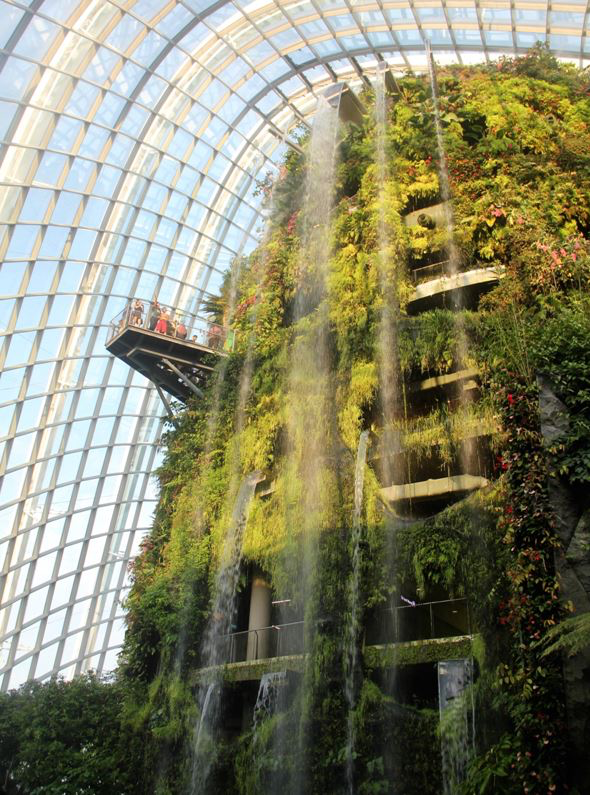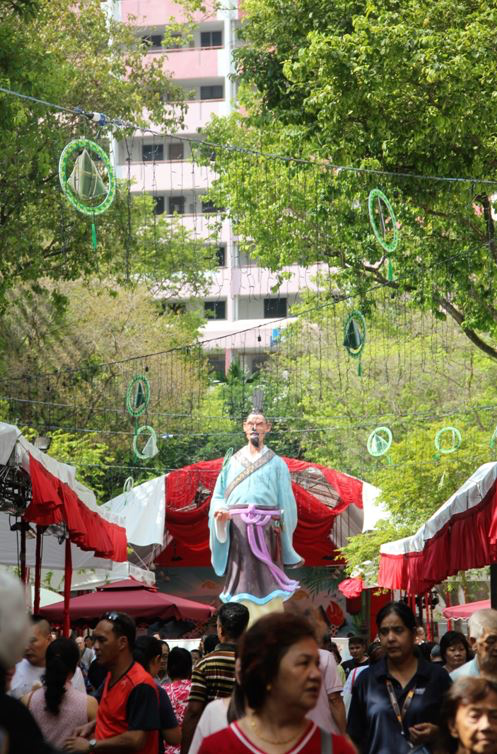This is a re-share of my experience in a YSEALI Regional Workshop experience in Singapore, and this was originally posted at Rappler X, June 18, 2017.
“Trapik e.”
No wonder. We complain about traffic but we induce it.

“The road is our right.” Yes, and here in the Philippines, we are the number one violators of our own rights.
For six days, I was released from the bondage of daily three-hour traffic standstills. This was the biggest relief from Metro Manila’s urban jungle. Even if my Filipino legs had to endure the twenty thousand or more steps of walkable Singapore.
While transport planning could provide a litany of issues on our daily plight, let me highlight these immediate few:
“We want to change the relationship between you and public transport.” While Singaporeans love the jeepney, and while this vehicle is culturally iconic for our capital city, many of us point to our drivers’ discipline and the terrible smoke-belching that comes with its trips. Moving ahead the crowded street, our option would be the unruly bus, or if we have the blessing of patience and immunity to being squeezed like sardines, then there’s the MRT or the LRT. A few bucks more could give us the taxi, but we complain there are sanitation and, well, respect issues.
So for those who could spare the extra expense, thank you, Jesus, there’s Uber, or there’s Grab. Safe, clean, and the driver wouldn’t be spitting out the window or shouting at you.
But that is exclusive. And not ideal.
Singaporean Prime Minister Lee Hsien Loong echoed Jane Jacobs in saying, “We will aim for a car-lite Singapore. We have to rely less on cars on the roads because we cannot keep building roads. More roads, more cars.”
We have to encourage more people to take public transport, and avoid the car-first mentality. Urban planners dream that citizens would opt for a bike more than a car. How much thought have we given that possibility that we could appreciate public transport more than private? How much policy have we campaigned for to address this issue, which impacts the convenience of our everyday lives?
“We should aim to make public transport affordable.”

Mohinder Singh of the Land Transport Authority Academy of Singapore said, “Do not look at transport in isolation. Mobility shapes cities.”
Mobility is about access. What transportation modes do we use, and how many trips do we make every day? How long does it take for us to reach the church, and do we have to depend on burning fuel to do so?
There’s such a thing called ‘active mobility.’ It looks at our footprints, and how we are connected from one point to another. How connected are our terminals and walkways? Is transferring from the jeep to the train easy? How many steps—or kilometres—do we need to take before reaching the next ride?

“Land transport is a journey.”
It definitely is. Investments take long groundwork, construction clocks longer, and realizing truly efficient land transport may span a lifetime.
When we plan, integration is key. The very streets we walk provide the skeletons of cities. We can link these with places that play roles in our lives. Integrate transport with housing, not just malls. Change how we view terminals, which can be linked with tourism and entertainment—yes, musicians and painters use terminals as their own platforms in other countries.

Beyond the box
Imagine a 100-hectare enclosed garden in a controlled climate, taking care of flora flown in from Madagascar or the Mediterranean. Imagine technological “super trees” that can also absorb water, provide light, and harness solar power.
Imagine that every residential building had a library with an international catalogue. If you borrowed books, you could simply drop them in any other library, no fuss.
Imagine waters that could fill up ninety Olympic-size swimming pools being drained by pumps in nine seconds so that flood could be eliminated. Imagine that this infrastructure was also a park, a dating place, complete with a city skyline on the horizon.
Imagine hearing the words “silver zones”, “biopolis”, “wheelchair-accessible buses,” “green-man crossings” and “sky gardens” at the forefront of our local plans. Imagine age-appropriate, gender sensitive planning implemented.
Imagine the possibilities of making beautiful and smart cities. With bittersweet shock, I learned all of these are already real (or too common) in Singapore.
What was the technique, we asked? And they answered, “Your country has to have an agency that spearheads innovation.”

Teo Jing Kok of the URA said, “Move towards a knowledge economy, so people will want to live in your city.” Cities around the world are moving towards a knowledge economy. Economies are spurring innovation, making ideals real.
“The Philippines should be able to benefit from its youthful population.” Which gets us to the question: What boundaries are we pushing to introduce innovation to our cities? What are we curious about, what do we imagine, and what do we want to experiment on? Our youth are now more empowered to innovate, and there is a pressing need to create innovation in urban planning.
If we want innovation, we have to create a mindset of leading a region, not a mindset of dependency. As Peter Hyland of Urbis said in a session, “Be the architects of your own countries, not the victim.”





Playing to strengths
What makes or breaks an economy always gets me thinking. And then you go hear the words in a foreign land, “We have enough jobs for our people.”
Well, my thought bubble sniped. We don’t. I think of my farmer friend, and what he has to go through to make ends meet in supporting other farmers. I think of the many Uber drivers I’ve met who quit their jobs because of “Minimum wage lang po kasi ako.” I think of the mother I pass by every evening, seeking shelter under the walkway’s roof, gathering her three little kids together, professionally begging from every passerby.
Our economy’s status plays in the headlines every day. We know we have resource-based industries; we top the charts on bananas, seafood, and coconuts. Manpower is our asset, our proud resource; we provide services around the globe, in practically every field there is.
As a country, what is our biggest economic strength?
When you ask a Singaporean what makes their economy, you get that sure, solid answer of “trade.”
Singapore does not have natural resources. They import water from Malaysia, but are now moving towards harvesting rainwater to produce new water. They buy rice, food, and basic resources from other countries. They import resources from the Asian Region and export it to the rest of the world, putting high value in their trading.

They brought us to Jurong Industrial Park. (In such a small country, yes, they do have industrial parks that even envision sky cities.) In that futuristic haven, they reiterated Myrdal’s cumulative causation theory: Target industries that encourage growth, and create more growth. Create synergy in the industries that you have. “There should be synergy in doing co-location, otherwise you will have high logistical costs,” said Seetoh Kum Chun. In doing so, we offer our people the opportunity to work. Economic planners should talk about linkages and make it easy for the economy.
What about grassroots? “Create entrepreneurs at the local level and nano-level,” Jack Sim said. Empower your people to play their roles in the economy. “That’s how you spur local economic growth.”
This brings me back to conversations with local planners. They point out during the economic parts of review sessions and workshops, “Why is it that in the Philippines, parents tell children, ‘Study so you can work someday,’ instead of ‘Study so you can be an entrepreneur or good business leader someday?’” Something to think about, in raising our young population.
The urban-rural connection
When I tackle education in the social assessment during planning workshops, I always ask the technical working group what courses the nearby colleges have. It varies from island to island, but at least I hear some people mention agricultural technology, fisheries, and forestry.
But youth reps tell me, “We prefer engineering. We prefer accounting. It’s embarrassing to be in agricultural technology, because that’s always the last choice in the field.”
Local agriculturists tell me, “Our farmers are getting older.” And farmers validate, “We don’t want our children to experience our plight. We want them to be able to study. We want them to have better lives.”
So we go to the discussion that the ADB and the World Bank have been researching on: Who will grow tomorrow’s food?
This problem is not just ours. It’s not just some other country’s problem either. We have a growth rate that may add 50 million people in the next 35 years. Who is thinking about feeding our people, if our farmers are growing tired? What will happen to the countries that depend on our agricultural exports, and what will happen to us if we cannot import? Aside from food, in which parts of our ridge-to-reef archipelago will we put our housing, and how efficiently mixed will it be with different land uses? How much prime agricultural lands will our cement eat up in the next thirty years?
Here we see how urbanization grows—from migration, from perspective, from poverty. Here, we see the value of urban-rural connections.
“If we leave our farmers behind, they will go to cities. Asia needs to learn how to feed itself,” said Linda Low. “Who feeds China? 1.4 billion people. How many farmers do we have left? If we cannot feed China, we cannot blame them for grabbing land. But that is not a solution.”
Metropolitans and highly urbanized cities are strong, but cannot entirely function on their own. “Don’t just look at the big cities. Look at the small- and medium-sized ones; they will drive economic growth.” We must understand our connection with the regions. “We are human beings. We must have empathy and understanding. We are not machines and technology that are just there.”
Love for heritage, respect for diverse cultures
When we talk about culture and heritage, it means love and respect for your history and your people.
We took a few examples during the workshop. Singapore’s China Town and Little India were conserved, even if the country admittedly made mistakes in the past. Incorporating heritage in planning, they took the advice of locals in Little India: “Don’t change us to another China Town because Little India has its own character. A sense of identity.”
In our tours, we learned how they created monuments or parks for historical value, even for small things like the nutmeg and the glam tree, which are tributes to their once vast fields dedicated to the two flora.
Heritage grants and digital outreach to share stories about Singapore were used as strategies, giving value to intangible cultural heritage.


My groupmates showed me Borobudur, old villages, and conserved temples. I learned how other ASEAN countries fought for their culture with so much passion, just by telling stories.
It could not be emphasized enough: “A nation must have a memory to give its sense of cohesion, continuity, and identity.”

Of course, pride welled inside me because of the National Commission for Culture and the Arts programs and efforts. But at the same time, just imagine how I cringed because our ASEAN neighbours knew about Jose Rizal and his photobomber and how all of this was allowed in the historic city of our world-famous capital, Manila. Variance released, destroyed image and landscape, or no applicable, specific law, however we attacked or supported Torre, the way we value our history, heritage, and culture shows the patriotism we have.
– – –
Click here to read:
